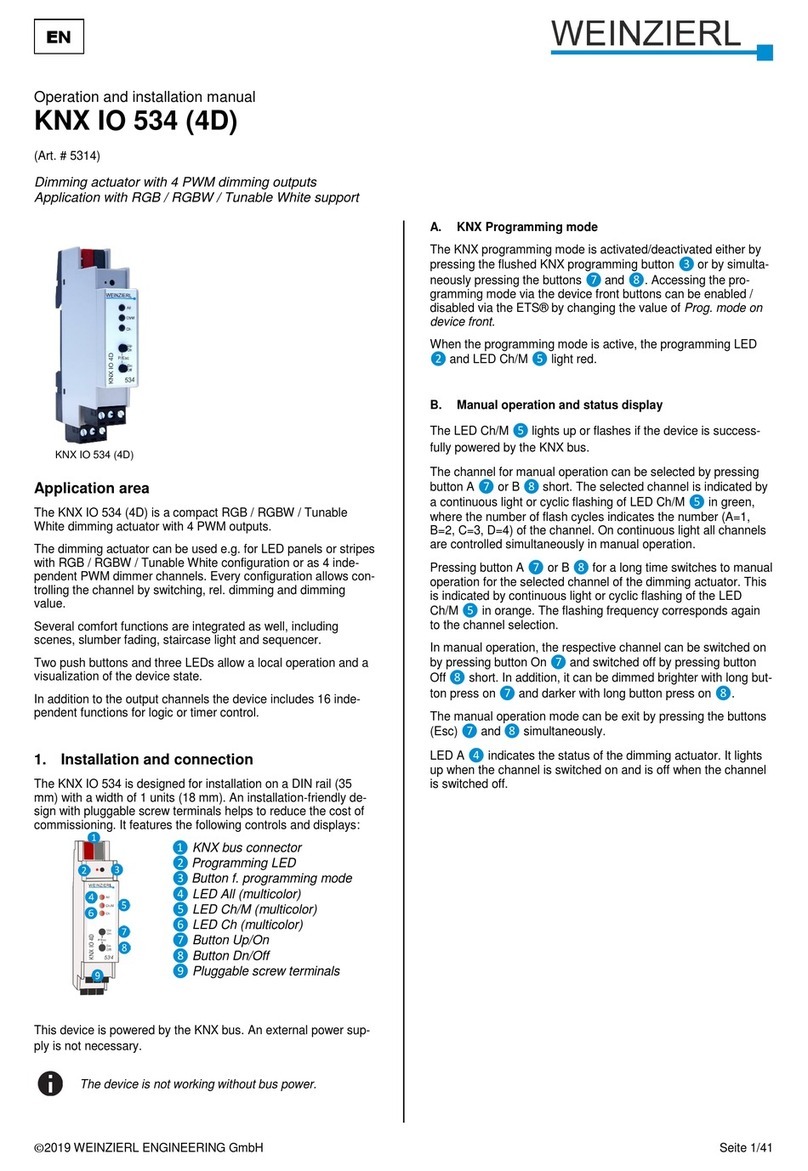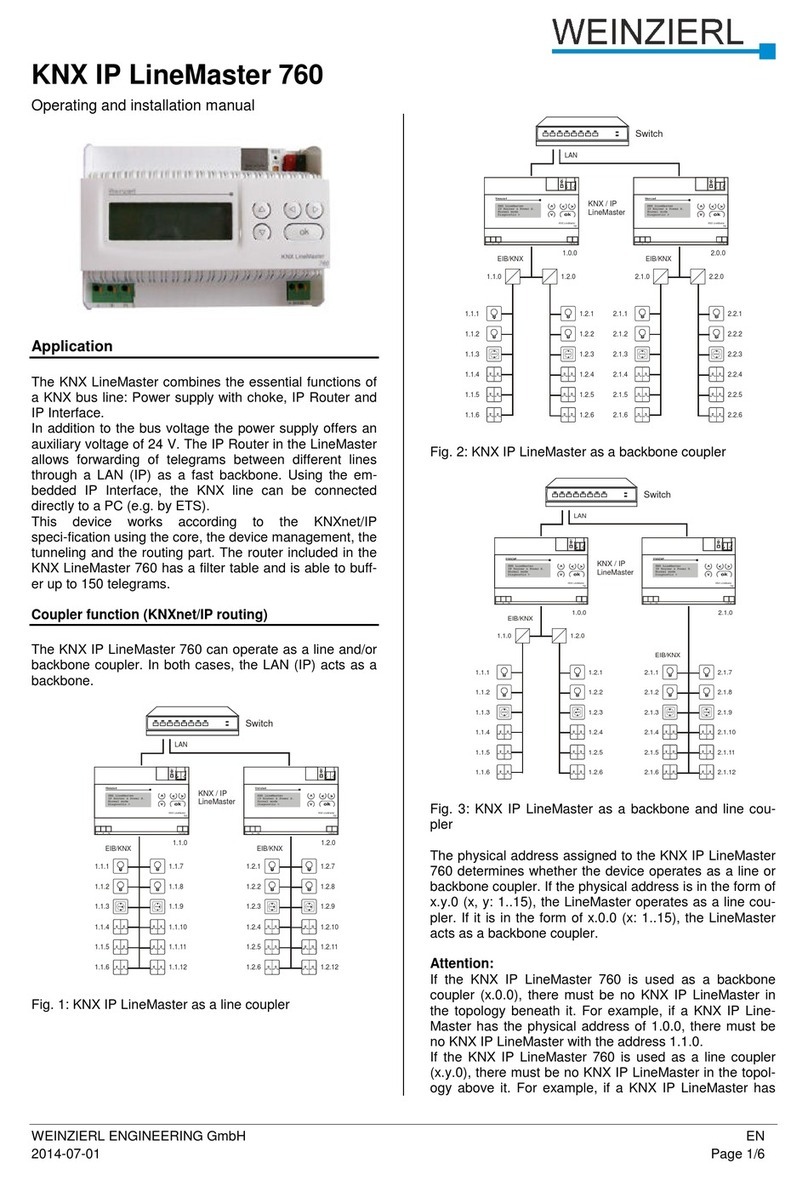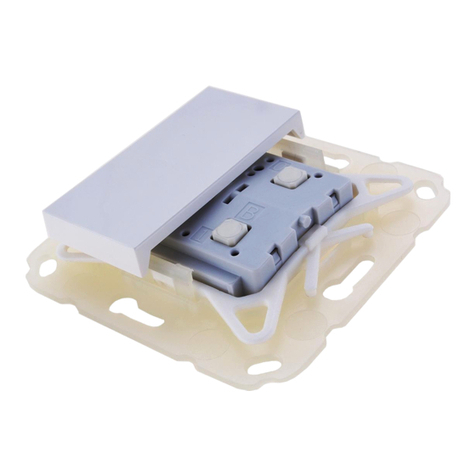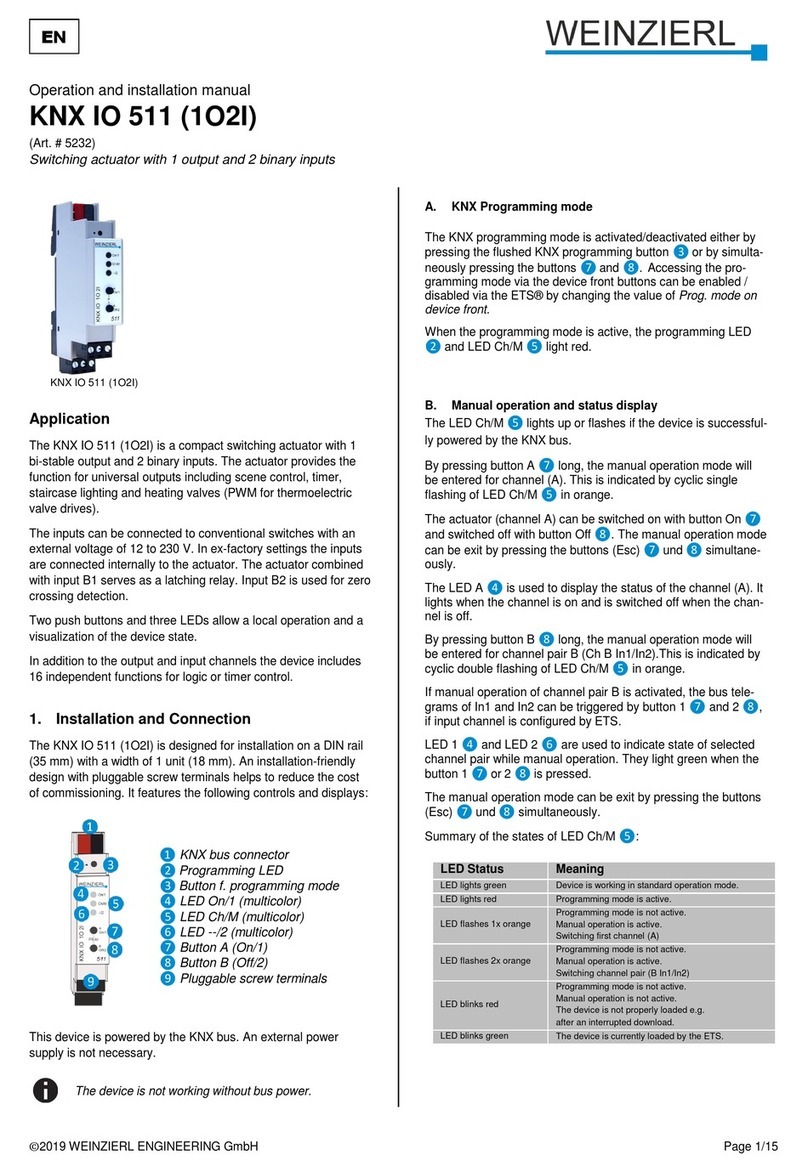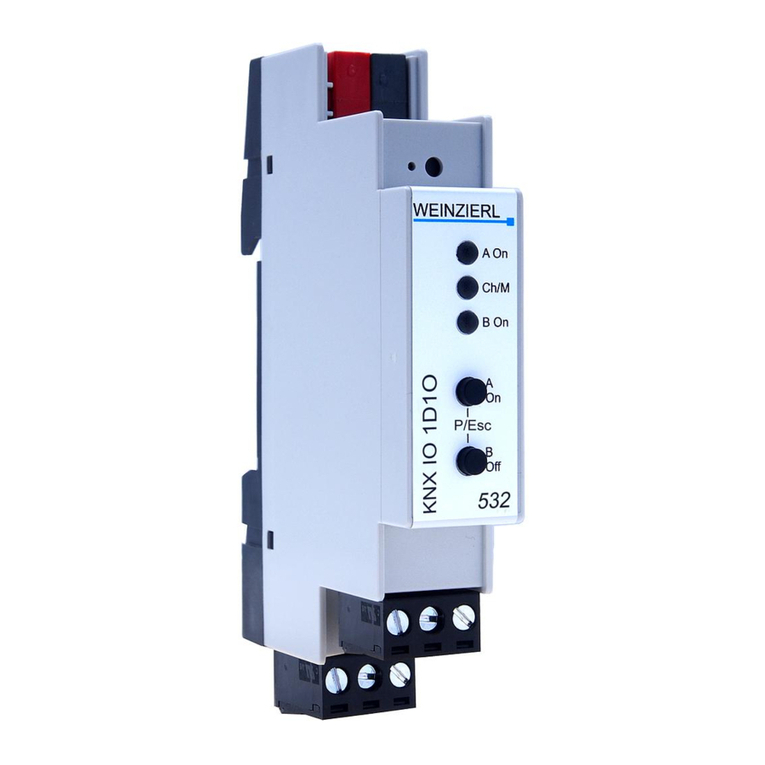© 2022 WEINZIERL ENGINEERING GmbH Seite 2/30
Content
1Application .........................................................................................................................3
2Installation and connection...............................................................................................3
2.1 KNX programming mode......................................................................................................4
2.2 Manual operation and status display....................................................................................4
3Reset to factory default settings.......................................................................................5
4Wiring scheme ...................................................................................................................5
4.1 Pluggable screw terminals ...................................................................................................5
4.2 Pin assignment ....................................................................................................................6
5KNX Security......................................................................................................................7
6ETS database .....................................................................................................................8
6.1 Secure commissioning.........................................................................................................8
6.2 Secure group communication............................................................................................. 10
6.3 Description.........................................................................................................................12
6.4 General settings.................................................................................................................12
6.5 Actuator A / B: General......................................................................................................14
6.6 Actuator A / B: Lock function..............................................................................................17
6.7 Actuator A / B: Universal output.........................................................................................19
6.8 Actuator A / B: Scene function ...........................................................................................19
6.9 Actuator A / B: On/Off delay...............................................................................................20
6.10 Actuator A / B: Staircase function.......................................................................................21
6.11 Actuator A / B: Valve actuator (PWM for thermal servo).....................................................22
6.12 Logic / Timing.....................................................................................................................25
6.13 Function 1 –16: Timer.......................................................................................................26
6.14 Function 1 –16: Logic........................................................................................................28
